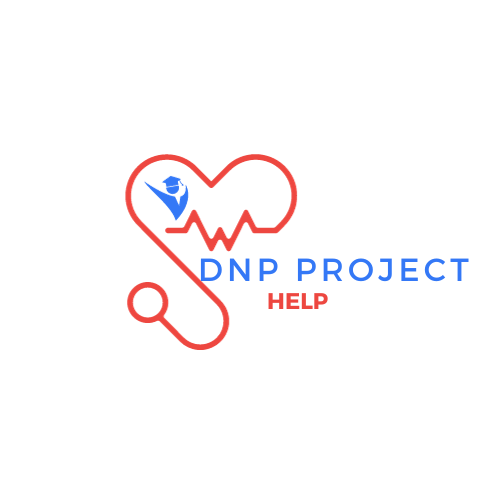
University of Texas Rio Grande Valley – Master of Science in Nursing Program
COURSE SYLLABUS – Summer 2016
NURS 6247: Role Development for the Nurse Practitioner
University Information:
- Department: Health Affairs-School of Nursing
- Website: www.utrgv.edu/nursing
- Contact: 956-665-3491
Course Details:
- Title: Role Development for the Nurse Practitioner
- Number: NURS 6247
- Description: Focuses on advanced practice nurse roles, covering professional development, scope of practice, legal and ethical aspects, business management, and practice models. Includes theoretical concepts like role theory, change theory, empowerment, and socialization.
- Credit: Two semester credit hours with 45 hours of clinical
- Prerequisite: NURS 6310
- Location/Time: Online (10 weeks from June 6 to August 12)
- Faculty: Dr. B. Bautista DNP, APRN, FNP-BC, CCD, CDE
- Office: HSHS-East 2.225
- Contact: 956-665-3497
- Email: beatriz.bautista@utrgv.edu (Preferred contact)
Course Objectives:
- Evaluate nurse practitioner roles within the healthcare team critically.
- Analyze the impact of social, economic, political, ethical, legal, and research issues on the nurse practitioner’s role.
- Compare and contrast nurse practitioner practice models for patient-centered, culturally appropriate, evidence-based goals.
- Use standards of practice, legal guidelines, and research in protocol development.
- Explain marketing and negotiation strategies to promote acceptance of the NP role.
- Integrate personal philosophy of nursing and healthcare into practice.
Course Content:
Focus on theory and application of nurse practitioner roles as a healthcare provider, consultant, educator, administrator, and researcher.
Evaluation Methods:
| Assessment | Weight |
| Team Presentation | 20% |
| Discussion Board | 15% |
| EBP Protocol Development | 20% |
| Personal Portfolio | 25% |
| Clinical Assignment | 20% |
(Late work without prior approval will not be accepted)
Grading Scale:
- A: 90 – 100
- B: 80 – 89
- C: 75 – 79
- F: <75 (Passing requires a minimum of 80%)
Required Texts:
- Buppert, C. (2015). Nurse practitioner’s business practice and legal guide.
- Collins-Bride,G.M., Saxe, J.M., Duderstadt, K.G. & Kaplan, R. (2017). Clinical guidelines for advanced practice nursing.
- DeNisco, S.M. & Barker, A.M. (2016). Advanced practice nursing: Essential knowledge for the profession.
Recommended Texts:
- Buppert, C. (2005). The primary care provider’s guide to compensation and quality.
- Cash, J.C. (2014). Family practice guidelines.
- Stewart, J.G. (2015). Role development for the nurse practitioner.
- Woolbert & Ziegler, B. (2010). A guide for APRN practice in Texas.
Required Reading:
- American Association of Nurse Practitioners “Standards of Practice”
- AANP NP Contract Sample
- AANP NP Brochure
- BON Rule 221 for APRNs
- Board of Nursing Advanced Practice education
- Consensus Model for APRN Regulation
- “2013 Nurse Practitioner Core Competencies”
Online Resources for NP Practice:
- American Association of Nurse Anesthetists
- American Association of Nurse Practitioners
- American College of Nurse Midwives
- American Nurses Credentialing Center
- Association of Women’s Health, Obstetric and Neonatal Nurses
- Coalition for Nurses in Advanced Practice
- Institute of Medicine Report: The Future of Nursing
Teaching/Learning Methods:
Independent reading, writing assignments, student presentations, discussions, and supervised clinical assignments.
Attendance:
- Clinical: 45 clinical hours (maximum 8 hrs/day) under master’s prepared NP guidance.
- Class: Online completion of weekly reading assignments, PowerPoint presentations, and quizzes.
Calendar of Activities:
Refer to the UTRGV academic calendar for important dates.
STUDENTS WITH DISABILITIES:
Contact Student Accessibility Services for accommodations.
MANDATORY COURSE EVALUATION PERIOD:
Complete an online evaluation through UTRGV account during the specified dates.
SCHOLASTIC INTEGRITY:
Follow UTRGV policies on scholastic integrity.
SEXUAL HARASSMENT, DISCRIMINATION, and VIOLENCE:
Report any instances under Title IX regulations. Refer to www.utrgv.edu/equity for more information.
COURSE DROPS:
| Policy Overview | |
| Dropping a Class | Students can drop a class without penalty until the official drop date. |
| Post Drop Date | After the drop date, students receive a letter grade; no further drops. |
| Important Rules | Be aware of the “3-peat rule” and the “6-drop” rule affecting academic success. |
| 6-Drop Rule | Texas law limits undergraduates to six course drops during their studies. |
| 3-Peat Rule | Extra fees apply when taking the same class for the third time. |
Clinical Etiquette:
| Guidelines for Clinical Setting | |
| Phone Etiquette | No audible phones or beepers in clinical; failure may result in failure. |
GENERAL GUIDELINES FOR WRITTEN ASSIGNMENTS:
| Assignment Guidelines | |
| Timely Submission | Submit assignments on due dates unless approved otherwise. Failure results in a zero grade. |
| Citation Format | Use APA format for references and paper formatting. |
| Formatting Instructions | Follow specific instructions for page length and format. |
| Document Details | Number papers consecutively, use 12 font size, Times Roman, and follow APA guidelines. |
| Proofreading | Check grammar, sentence structure, spelling, and punctuation. |
| Plagiarism Awareness | Strict adherence to APA Manual for plagiarism prevention. |
| Submission Format | Submit papers in Word document format with specific naming conventions. |
LEARNING TEAM POWERPOINT PRESENTATION & PAPER:
| Presentation Assignment Details | |
| Team Assignment | Students self-assign teams (2/team) and choose a relevant NP practice issue. |
| Topic Approval | Topics approved on a first-come-first-serve basis; additional areas need approval. |
| Presentation Content | Tegrity presentation, along with a 5-7-page scholarly paper on the chosen topic. |
| Submission Deadline | Assigned Drop Box closes on 7/1/16 at 12 pm; late or missed assignments not accepted. |
Learning Team Presentation-Grading Criteria Points Possible:
| Presentation Evaluation Criteria | |
| Issue Description | 20 points |
| Issue Analysis | 25 points |
| Issue Significance | 20 points |
| PowerPoint & Oral Presentation | 20 points |
| Adherence to Guidelines | 15 points |
| Total Points | 100 points |
DISCUSSION BOARD & COURSE PARTICIPATION:
| Participation Evaluation Criteria | |
| Perceptiveness of Comments | 25 points |
| Relevance and Intellectual Contribution | 25 points |
| Different Perspectives | 25 points |
| Submission Requirements | 25 points |
| Total Points | 100 points |
Note:
- Late work without prior faculty approval will not be accepted, resulting in a zero grade.
EVIDENCE-BASED PRACTICE PROTOCOL DEVELOPMENT:
| Assignment Overview | |
| Purpose of Assignment | Develop a clinical practice protocol based on evidence for common chief complaints. |
| Assignment Details | Students form teams (2/Team) and choose a chief complaint. The assignment follows a chronological order. |
| Paper Content | Write a 2-3 page paper covering chief complaint definition, incidence, pathophysiology, presenting symptoms, and a SOAP note. |
| Algorithm and Diagnoses | Formulate an algorithm and select the three most probable diagnoses, working up the #1 diagnosis. |
| Submission Requirements | Submit a reference page and copies of used articles via Blackboard DROP BOX. |
| Chief Complaints (Chronological Order) | – Abdominal pain in an adolescent male – Acute abdominal pain in a 16-year-old female – Acute dysphagia in a 4-year-old – Breast pain in a 45-year-old female – Diarrhea in a 3-year-old child – Hematuria in a 5-year-old female – Otorrhea in an adult – Backache in a 35-year-old male – Backache in a 75-year-old female – Acute cough in a 10-month old – Chronic cough in a 40-year-old – Headache in a 32-year-old female – Headache in a 35-year-old male – Secondary amenorrhea in a 14-year-old – Chronic skin rash in an 8-year-old |
Evidence-Based Practice Protocol Development Grading Criteria:
| Evaluation Criteria | |
| Chief Complaint Analysis | 20 points |
| Diagnostic Points Clarity | 20 points |
| Treatment Options Definition | 20 points |
| Assessment and Referrals | 10 points |
| Client Education and Follow-Up | 5 points |
| Protocol Format | 10 points |
| Literature Review Quality | 15 points |
| Total Points | 100 points |
Note:
- Late work without prior faculty approval will not be accepted, resulting in a zero grade.
PROFESSIONAL PORTFOLIO GUIDELINES:
| Section | Details |
| Purpose | Prepare for advanced practice nurse employment through documentation of education, training, and experience. |
| Components | 1. Cover Letter (with professional photo) 2. Resume (with application to APRN philosophy, career goals) 3. Job Description 4. Brochures or web page copies 5. Articles about yourself 6. Testimonials or appreciation letters 7. Letters of recommendation |
| Applications and Forms | Filled fictitious forms: 1. BNE Application 2. ANCC Application 3. Medicare/Medicaid/NPI/DEA Application 4. Physician Collaboration Agreement 5. Transcripts 6. Licenses, certifications & liability insurance copies |
| Grading Criteria | Cover Letter/Resume: 25 points, Professional Objectives/Goals: 20 points, Filled Applications/Forms: 10 points, Collaboration Agreement: 10 points, Supporting Documentation: 20 points, References/Format: 15 points. Total: 100 points. |
| Submission Requirements | Submit by the deadline, no late submissions without prior approval. |
CLINICAL ASSIGNMENT:
Part I – Description of NP’s Roles:
- Provider
- Consultant
- Educator
- Administrator
- Researcher
Part II – Student’s Role as NP:
- Description of performed NP role
- Self-evaluation of roles
- Identifying implementable NP roles
- Description of NP’s Family Theory assessments and family interventions.
Part III – Various Aspects:
- Critique clinical encounter form.
- Description of billing-related books (CPT, ICD-10, HCPCS).
- Description of clinic’s Medicare compliance plan.
- Description of HIPPAA Regulations.
- Evaluation of documentation adequacy for billing at different levels.
- Description of billing modifiers used by NPs.
- Identification and description of counseling and consultation codes.
Grading Criteria:
- Description of NP Roles: 25 points
- Student’s Role & Self-Evaluation: 20 points
- Questions 1-8: 25 points
Forms & Documentation: 30 points
- Total: 100 points
Submission Requirements:
Submit by the deadline, no late submissions without prior approval.
NURS 6247 COURSE CALENDAR SUMMER 2016:
| Week | Date | Topic | Assignments/Activities |
| #1 | 6/6/2016 | Introduction to Course | Listen/View Lecture, Read Buppert Ch 1-2, 14, DeNisco Ch 1-4, Select clinical preceptor, SELF assign team. |
| #2 | 6/13/16 | Clinical Sites/Assignments | Read Buppert Ch 3, 7, DeNisco Ch 5-6, 12-13, Submit Weekly Timed Report. |
| #3 | 6/20/16 | Clinical Sites/Assignments | Read Buppert Ch 4-7, DeNisco Ch 7-11, 14-17, Submit Weekly Timed Report, Learning Team Presentation due. |
| #4 | 6/27/16 | Clinical Sites/Assignments | Student Presentations, Read Buppert Ch 12, 13, 16, 17, DeNisco Ch 18-22. |
| #5 | 7/04/16 | Clinical Sites/Assignments | Read Buppert Ch 9-11, DeNisco Ch 23-25, Submit Weekly Timed Report, EBP Protocol Development due. |
| #6 | 7/11/16 | Clinical Sites/Assignments | Read Buppert Ch 8, 15, DeNisco Ch 26-27, Submit Weekly Timed Report, Discussion Board Participation. |
| #7 | 7/18/16 | Clinical Sites/Assignments | Read Buppert Ch 2, 16-17, DeNisco Ch 28-30, Submit Weekly Timed Report, Personal Portfolio due. |
| #8 | 7/25/16 | Clinical Sites/Assignments | Submit Weekly Timed Report. |
| #9-10 | 8/01/16-8/12/16 | Clinical Assignments | Clinical Assignment due, University’s online course evaluation. |
Note:
- Weekly clinical reports must be submitted one week before the scheduled clinical.
- Learning Team Presentation, EBP Protocol, and Personal Portfolio have specific deadlines.
- University’s online course evaluation and final grades posting at the end of the course.
Must Read:


